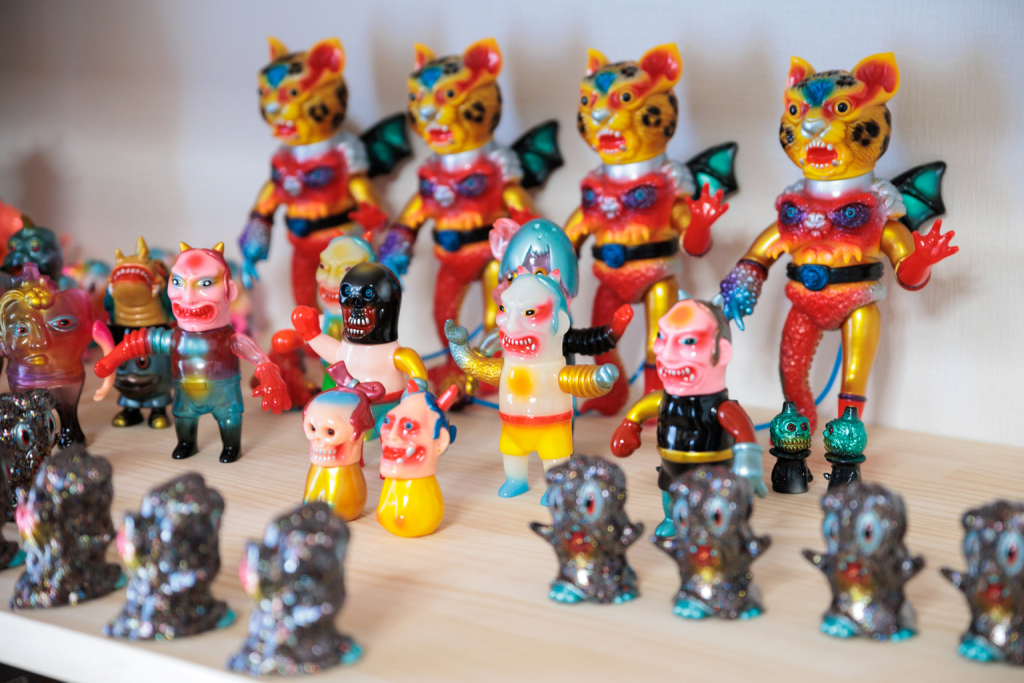I’m at a convention hall during a sweltering Hong Kong summer day. Kids have been lining up for hours around the block to meet their favorite Japanese artists. While you might expect this kind of reception for sports stars or musicians, they are in fact waiting to buy toys or to score signatures from a group of Japanese creators, whom, outside of this world most people would have never have heard of. During the internet age, where everything is accessible without much of a challenge, there are only a few items — such as celebrity-designed sneakers — that are so in demand people will queue endlessly. However, this is the norm for sofubi — a type of limited-edition art object, made in small batches by skilled artisans who laboriously make each one by hand.
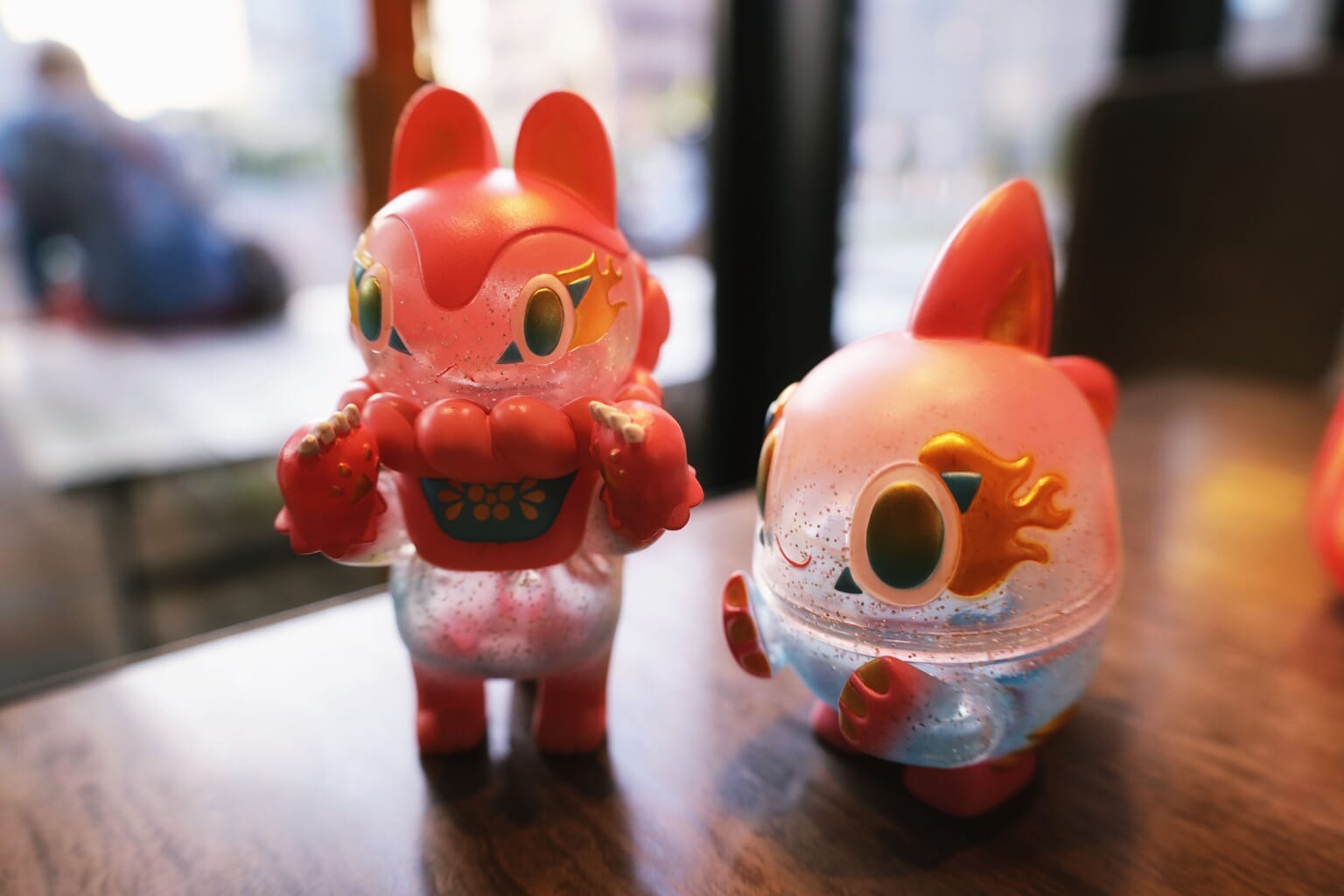
Inuharigon and Kibunadon sofubi designed by Teresa Chiba.
Sofubi 101
The term sofubi is a combination of the words “soft” and” vinyl” and refers to figures made with PVC. To the touch, they’re surprisingly tough, despite their malleable appearance that suggests they’re almost squishy. They often reference Japanese motifs such as kaiju monsters and traditional folkloric figures but are rendered with colors that are wild and psychedelic, with gradations, glitter inserts and tones that range from violent fluorescent shades to soft pastels.
Domestically, they’re made by craftspeople, many of whom are veterans in their trade. This adds to their prestige and appeal. Teresa Chiba, a popular sofubi artist whose figures are usually based on traditional Japanese folk toys such as akabeko and inuhariko, says the difference between things like mass-produced gacha gacha (capsule) toys and artisan-made sofubi is that the former is a product, whereas sofubi are closer to handmade artworks. She notes that the aesthetic sensibilities are also similar to traditional folk toys, in that they have a certain roundness, and a “looseness where you can see that a human made them.”
Skilled Artisans
Sofubi are made of PVC or polyvinyl chloride, a material that was synthesized in Germany in 1872 and later plasticized by blending it with various materials in 1926. The traditional production process that is the norm in Japan uses a wax prototype that melts when making a metal mold. Each step is done by hand, and veteran artisans use their skill to spread the material across the mold’s crevices, enabling the final piece to have beautiful detail and a hollow, light body.
While sofubi are increasingly mass-produced in China, Manabu Takeo, a sofubi producer and manager of several popular artists, says that Japanese creators only use local craftsmen. He explains, “The way they make them abroad is totally different. In China they put all the material into a black box, and from a hole they come out automatically. Here, artisans make each one by one and they can make really beautiful clear sofubi with that technique.”
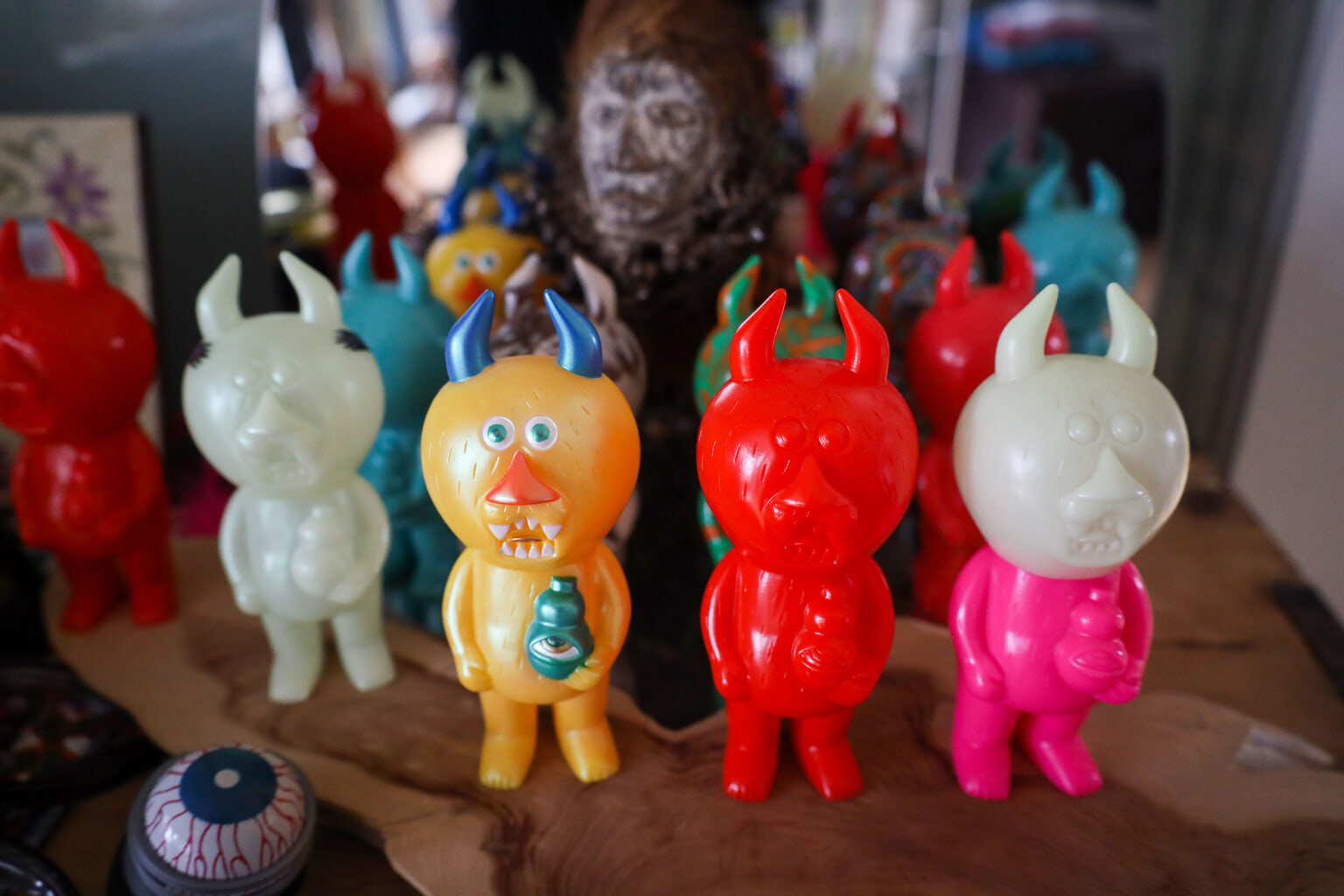
Hideyuki Katsumata’s Hanautah character exemplifies his penchant for bold lines and bright colors.
Aren’t Toys for Kids?
The appeal of sofubi for collectors is multifaceted. Firstly, they flaunt a subcultural, subversive appeal. When compared to characters that are often used as commercial promotional tools or children’s toys, sofubi are mascots for Japan’s underground. Hideyuki Katsumata is an artist in Osaka who paints character-driven artworks typified by bold lines and bright colors. While he was initially inspired by lowbrow art such as graffiti artists Barry McGee and Osgemeos, he includes motifs from the folk toy world such as kokeshi, as well as shunga (erotic woodblock prints) in his work. He has produced sofubi for around 10 years; the latest of which features a giant phallus on its head.
Likewise, popular artist Izumonster’s figures sport an erotic grotesque aesthetic. While he is one of the most prolific sofubi artists in the scene with a large studio in Nagoya where he does the design, prototyping and spray painting, he garnered his initial clientele base as a tattoo artist and currently also works at Nagoya’s 8 Ball tattoo shop. Both his tattoos and sofubi use vivid colors, with motifs such as monsters, kaiju, bizarre-looking space creatures, as well as explicit naked figures with full body irezumi ink. Two of his characters are made in the likeness of male and female genitals in rainbow hues.
While Katsumata insists while laughing that he hasn’t received art school training so his work is naturally “low brow” without him explicitly trying, for the consumers, this accessibility is part of the appeal. Chiba adds, “Things like high culture and fashion are fabulous but only for a select segment of people. At a certain price point people really can’t come across it. That’s what I like about kabuki too, it is subcultural, a form of entertainment like TV, as opposed to Noh.”

Social Media Connections
Another large part of sofubi fandom is the connection to social media. Many of these fans use their platforms as a means to flaunt their toys. Izumonster tells me that the two go hand in hand. “Social media is really important to toy culture. Without Instagram it wouldn’t have spread like this.” He explains, “Collectors love to show them on their feed — they take them outside and take photos with them. If you want to know how to buy them, follow everyone’s accounts as that is where you will find information on when they are being sold.”
Another prominent aspect of contemporary sofubi culture is the prolific female fanbase, having swooped in on an previously untapped demographic of consumers. One of the most popular sofubi artists of the current craze is artist Konatsu. She has 67,000 followers on her main Instagram account and her cute kaiju toys — the most popular of which is a cat monster character called Negora — appeals to not only the regular designer toy crowd, which could be described as, up until now, male geeks, but also a large contingency of women. Her popularity, as well as other women artists that rose up during the same time such as Chiba and Kaori Hinata, has fostered a primarily woman-centric clientele, many of whom were originally interested in dolls, and it is not uncommon to see as many women as men at conventions.
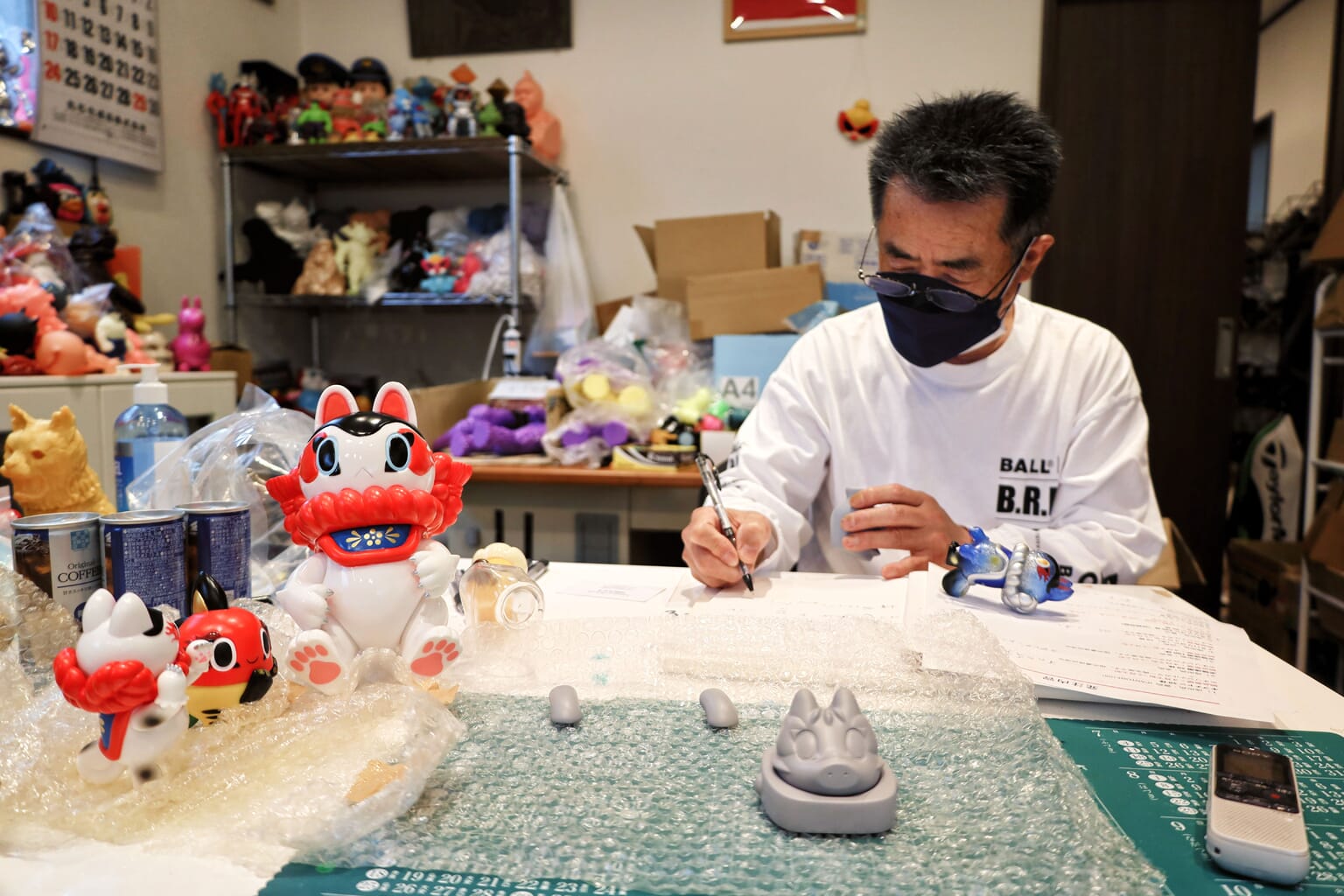
Teresa Chiba works in collaboration with Maruyama toys, veteran second generation sofubi artisans in downtown Tokyo, to craft her toys.
The Soft Vinyl Legacy
While sofubi are on trend now, they rose in prominence after World War II. Much of these sofubi were solely manufactured for export to the US. The rise of kaiju made soft vinyl toys boom in popularity in the 1960s, followed by other trends such as superheroes, characters and robots. Takeo, at 58 years of age, is of the generation that grew up with Ultraman and Godzilla. His love of sofubi is driven by nostalgia.
“Up until junior high school,” he says, “my friends bought these toys and were playing with them. I forgot about them in high school but when I reached adult age people of the same age started to produce sofubi in the 1980s with sensibilities where I was reminded of my childhood.”
A designer sofubi boom started in the 1990s instigated by men’s street fashion brands centered around Ura-Harajuku. Brands like Bounty Hunter sold astronomical amounts of toys and brought new values to these figures, where trendsetters made them into lifestyle items aligned with sneakers and street fashion, aimed at adults. Takeo also saw this street culture movement too, and felt that this format had potential. He started to produce them with women indie artists.
Many other current makers such as Katsumata, who started making sofubi around 10 years ago, also remember this boom.
“When I was in my 20s sofubi got big again and Beams was making Ultraman and kaiju remakes,” he says, “I saw them around this time too but it was hotter back then, even more than now. In my era, designer sofubi got trendy. I realized that even if you aren’t a large maker, you can make small lots. I think as a design and decorative piece of art, the quality of the item itself is superior.”<
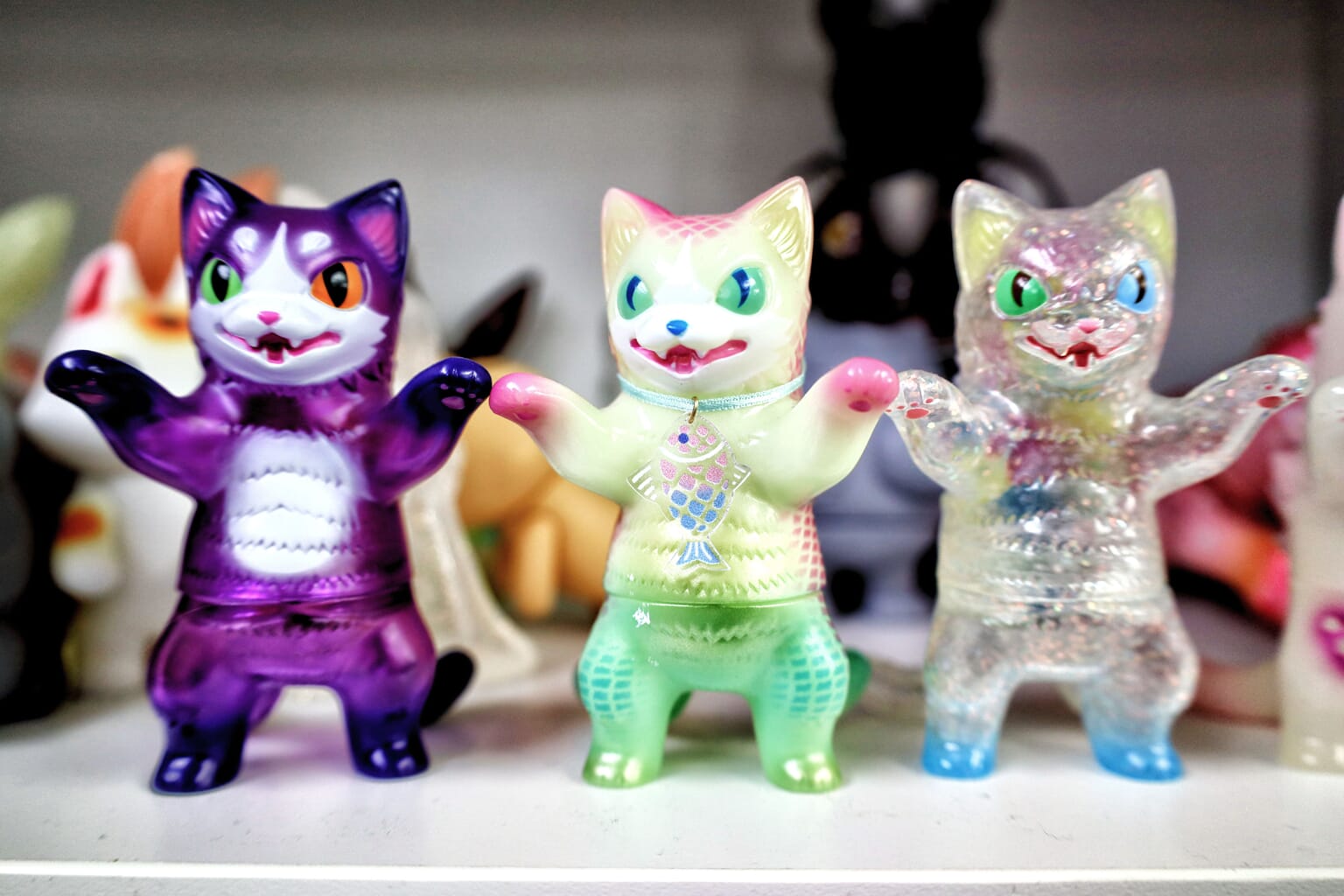
Negora cat
Consumer Craze
Something that the sofubi world has in common with street culture must-haves, such as sneakers and T-shirts like those made by Supreme, is that releases are usually limited. The lack of availability adds to their desirability. Makers are experts at understanding consumer behavior and the market. Chiba says that while in the past independent sofubi makers were often people who just did it for a hobby and might have made them for sentimental reasons only; hers is the generation that “wants to make art and do business as well.”
Manabu explains, “With collectors, if you can buy them anywhere, they don’t want it anymore. They want things that are hard to get, so we have to control what goes into the market. But it can’t be too many. If it is too hard to get, they can’t buy them and for them that is boring too. There are also resellers who flip them online, sometimes for 10 times the price and others who only buy them for investment – however, these people add value to the item as well in a way. Rather than selling for one or two years like crazy, we are looking for longevity and to control the market like that.”
He admits this strategy makes some consumers quite literally bonkers – “Fans are really passionate and fired up, we are a bit scared. They might get angry when they can’t get what they want and might go off and attack us. People who buy stationery don’t go off like this!”
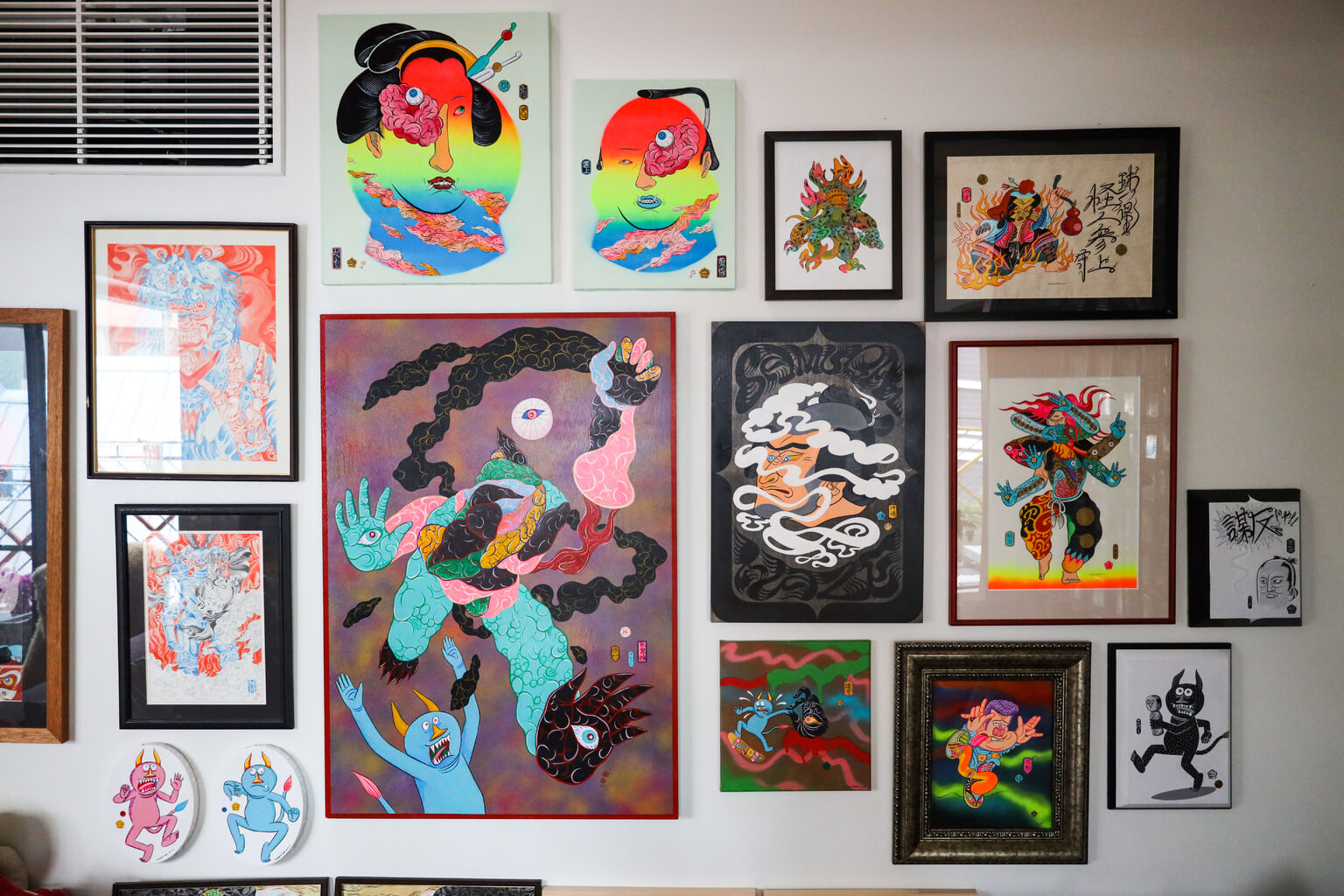
Creative designs in Katsumata’s studio.
A Religious-Like Fervor
It might not be too much to say that the fervor is somewhat religious.
Chiba says, “The cultural background in Japan lends itself to this culture because of animism. We are brought up to believe a lot of things have a soul from a young age. Everything has a god, so I think it is a country where it is easy to give birth to characters.”
Katsumata adds, “Japan is a yaoyorozu [literally eight million gods, the Shinto notion that everything has god] country so there is the notion that if there is a face, there is soul.”
It’s the end of the Expo in Hong Kong and punters are leaving with their newly acquired haul. Despite all that can be said about this trend in Japan, it is obvious that the notion of playing with toys resonates across cultures. Chiba agrees. “When I go to conventions overseas, everyone is doing the same thing: they take their toys, we eat together, we take photos together and say, how cute. Even though it is basically adults playing with toys, that is fun!”
Related Posts
Photos by Manami Okazaki

